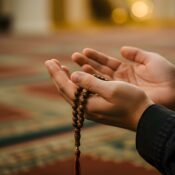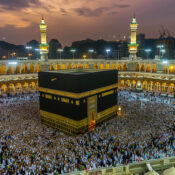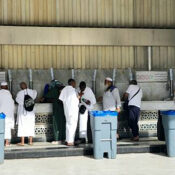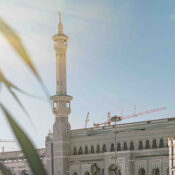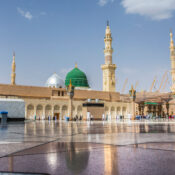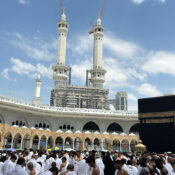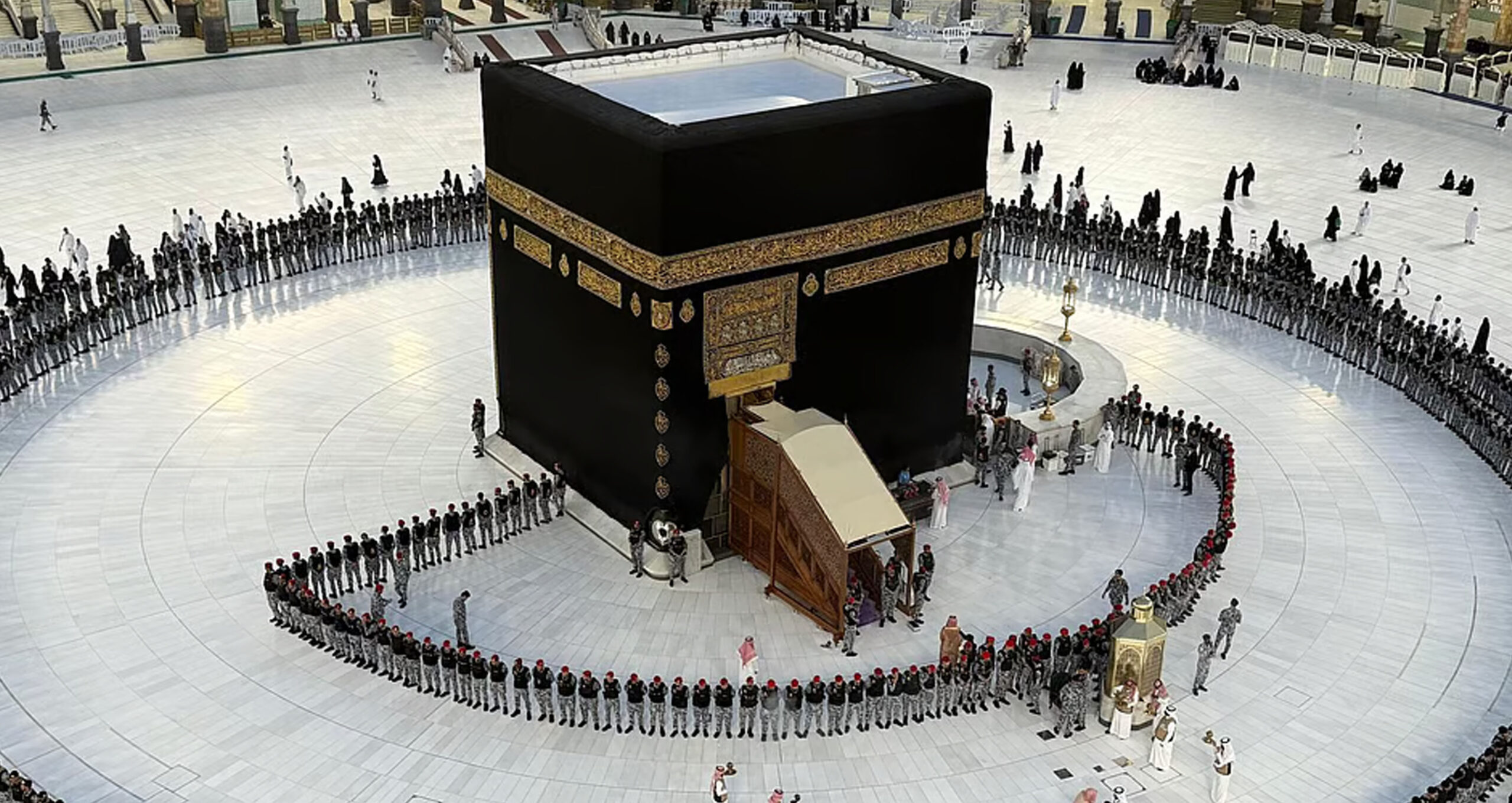
What is the Kaaba Washing Ceremony
The Kaaba, the holiest structure in Islam, stands gracefully at the centre of the Masjid al-Haram in Makkah, Saudi Arabia. Every Muslim across the globe faces this sacred House of Allah during prayer, symbolising unity and devotion. Throughout the year, millions of pilgrims visit the Kaaba during Hajj and Umrah, their hearts filled with reverence and submission.
Among the numerous religious traditions associated with the Kaaba, one that stands out in sanctity and heritage is the Kaaba Washing Ceremony (Ghusl al-Kaaba) — a centuries-old ritual of physical and spiritual purification that continues to this day.
This blog explores the origins, process, and spiritual meanings behind the Kaaba Washing Ceremony — a timeless reminder of purity, devotion, and humility before Allah.
Origins of the Kaaba Washing Ceremony
The ritual of washing the Kaaba dates back over 1,400 years, to the time of Prophet Muhammad (peace be upon him). Historical sources state that after the peaceful conquest of Makkah in 630 CE, the Prophet (PBUH) entered the Kaaba, destroyed the idols, and cleansed its interior with his own hands using Zamzam water.
From that blessed moment, the tradition of purifying the Kaaba became a revered Sunnah, continued by successive Muslim rulers, caliphs, and sultans across generations.
- Caliph Umar ibn al-Khattab (RA) was among the earliest to continue this sacred act personally.
- During the Umayyad and Abbasid dynasties, the washing was formalised as an official ceremony.
- The Ottoman Sultans sent richly embroidered textiles and the Kiswah (Kaaba covering) in grand processions to Makkah each year.
- In the modern era, the Kingdom of Saudi Arabia continues this noble practice with great respect, under the supervision of the Custodian of the Two Holy Mosques.
This continuity across eras symbolises how the House of Allah remains a centre of purity, humility, and unity for the entire Muslim Ummah.
Why is the Kaaba Washed?
In Islam, cleanliness (taharah) is an essential part of faith — both physical and spiritual. The Kaaba, as the Qibla for all Muslims, represents the purest connection between humanity and the Divine.
Therefore, washing the Kaaba is not merely an act of maintenance; it is a symbolic renewal of spiritual devotion. It serves as a reminder that worship should always be approached with a pure heart and sincere intention.
The washing holds multiple meanings:
- Spiritual Renewal – It prepares the Kaaba for the blessed seasons of Ramadan and Hajj, reflecting inner purification before worship.
- Sanctity and Respect – It demonstrates deep reverence for the House of Allah, the centre of all prayers.
- Unity and Equality – Regardless of rank, every participant, whether a king or a scholar, cleans the Kaaba as a humble servant of Allah.
“Truly, Allah loves those who turn to Him constantly and He loves those who keep themselves pure.” — Qur’an 2:222
When is the Kaaba Washing Ceremony Held?
The Kaaba is washed twice a year, and each occasion is planned with precision by the General Presidency for the Affairs of the Two Holy Mosques.
- Before Ramadan – Usually in the Islamic month of Sha’ban, as a preparation for the holy month.
- Before Hajj – Typically in Dhul Hijjah, just before the arrival of pilgrims for Hajj.
These timings symbolise spiritual readiness — before Ramadan’s month of mercy and before Hajj, the season of forgiveness. The exact dates vary each year based on the Islamic lunar calendar.
How the Kaaba is Washed: Step-by-Step
Although the ceremony is exclusive and attended only by select dignitaries, its sequence has remained almost unchanged for centuries.
1. Opening the Kaaba
In the early morning, the golden door of the Kaaba is unlocked using a beautifully crafted key — a symbol of honour held by the Bani Shaiba family, who have been the keepers of the Kaaba’s key for generations.
Invited guests, including senior officials, Imams, and scholars, enter respectfully. The atmosphere is filled with calmness, reverence, and prayer.
2. Interior Cleaning
Inside, the Kaaba’s interior — a small, serene chamber — is wiped down with a mixture of Zamzam water, rosewater, oud (agarwood), and musk. This fragrant blend symbolises purity and devotion.
Participants gently clean the marble walls and floor with white cotton cloths, ensuring every movement is made with sincerity and humility.
The mixture used to clean the Kaaba represents the spiritual essence of Islam: water from Zamzam for purity, rosewater for love, and oud for dignity.
3. Perfuming the Space
After cleaning, the interior is perfumed using traditional incense burners (mabkhara) filled with oud and amber. The scent fills the sacred chamber, creating a spiritually uplifting atmosphere that reflects beauty and tranquillity.
4. Closing Ritual
When the washing and perfuming are complete, the participants offer two rak‘ahs of prayer inside the Kaaba, thanking Allah for the honour. Hajj Packages 2026 Afterwards, the golden door is closed, marking the end of the ritual.
Outside, photographers and media representatives record the event for history, while thousands of pilgrims in the courtyard watch with reverence from afar.
Who Performs the Washing?
The Kaaba Washing Ceremony is typically presided over by:
- A senior member of the Saudi Royal Family, often the Governor of Makkah.
- The Imams and scholars of Masjid al-Haram.
- Ambassadors and ministers from various Islamic nations.
- Leaders of Islamic organisations and prominent figures.
Participation is by invitation only, making it one of the most exclusive religious events in the world. While the public cannot enter, many pilgrims watch the preparations and feel spiritually connected to the ritual.
Symbolic Meaning of the Kaaba Washing Ceremony
Beyond the physical act of cleaning, the Kaaba Washing Ceremony represents profound spiritual lessons:
- Purity: A reminder to purify one’s soul just as the Kaaba is purified.
- Unity: Muslims across continents share a single Qibla and a single faith.
- Humility: Even kings and scholars serve as cleaners in the House of Allah.
- Preparation: A call to cleanse hearts before worship and reflection.
This ceremony teaches that no matter our worldly status, before Allah, all are equal.
Security and Coordination
Due to the presence of dignitaries and the sacred nature of the ritual, the ceremony is carried out under strict security arrangements.
The Royal Guards, mosque officials, and the Presidency of the Two Holy Mosques manage every detail — from crowd control to the careful handling of materials.
Only select media outlets are permitted to record, ensuring sanctity and respect for the sacred space.
Interesting Facts About the Kaaba and Its Washing
- The interior of the Kaaba contains three wooden pillars supporting the roof.
- The Kiswah, the black silk covering, is not changed during the washing but on the 9th of Dhul Hijjah every year.
- Each Kiswah costs over 20 million Saudi Riyals and takes nearly a year to produce.
- The washing cloths and rosewater used are often kept as blessed relics or displayed in Islamic museums.
- The Kiswah factory in Makkah employs hundreds of skilled artisans who hand-embroider Quranic verses with gold and silver threads.
- The total weight of the Kiswah is about 850 kilograms, and it covers the Kaaba, which stands 14 meters high.
Conclusion
The Kaaba Washing Ceremony is much more than a royal event — it is a spiritual expression of devotion and humility that echoes the essence of Islam.
While only a few are physically present inside the Kaaba during this sacred act, the entire Muslim Ummah shares its spiritual significance. Umrah Packages 2025 The ceremony embodies purity, unity, and service, reminding us that faith is not in words alone but in humble action before Allah.
Through centuries of change, this blessed ritual remains a living symbol of love, reverence, and submission, linking every believer’s heart to the House of Allah in Makkah.
Frequently Asked Questions
Q. Can the public witness the Kaaba Washing Ceremony?
No, it is a private event attended only by invited officials, though pilgrims can observe the preparation and entry process from outside.
Q. Who participates in washing the Kaaba?
Usually led by a Saudi royal family member, joined by the Imams of Masjid al-Haram, ministers, ambassadors, and Islamic scholars.
Q. Why is Zamzam water used?
Zamzam water, sourced from the sacred well near the Kaaba, symbolises purity, blessing, and divine mercy.
Q. When does the ceremony occur?
It is performed twice annually — before Ramadan and before Hajj — as per the Islamic lunar calendar.
Q. Is the Kiswah change during the washing?
No, the Kiswah is replace separately on the 9th of Dhul Hijjah.
Q. What is inside the Kaaba?
A simple marble chamber with Quranic inscriptions and three wooden pillars supporting the ceiling.
Q. Is washing the Kaaba compulsory?
It is not obligatory but is considered a highly respected Sunnah, maintained to express reverence for the House of Allah.


